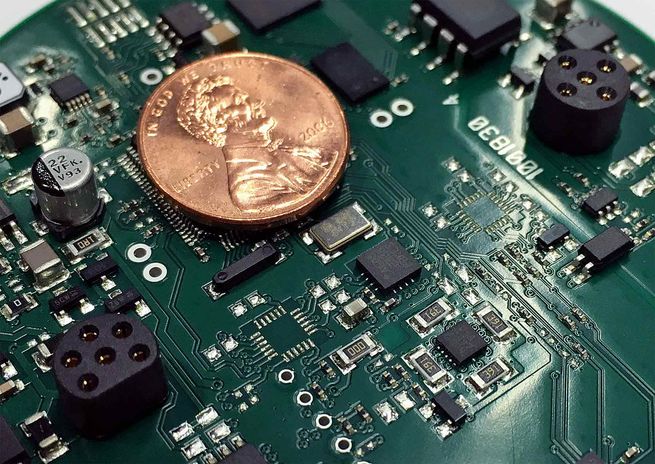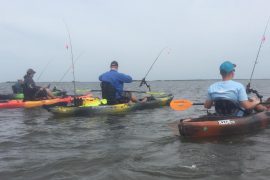
Did you know that there’s a tiny little gyroscope in your smartphone? Your drone has one too.
Font Family Default Monospace Serif Proportional Serif Monospace Sans-Serif Proportional Sans-Serif Casual Script Small Caps
Defaults Done
That gyro enables stable flight for copters and allows your phone screen to rotate. Now, that miniature motion sensor can be found in the newest 3D sonar transducers, enabling stabilized, more realistic bottom returns.
“It’s smaller than a pinkie nail,” says Jim McGowan, Raymarine’s marketing manager. “The challenge we have for measuring anything with 3D — whether sound energy or radar — is having a steady reference point to measure from.”
By Definition
For Raymarine’s new RealVision 3D and Furuno’s DFF-3D sonar units, both introduced in 2017, and for Garmin’s Panoptix all-seeing sonar, which debuted in 2016, that has meant adding a tiny gyro to the transducer. Raymarine calls this an AHRS, or attitude heading reference system; the company first used it in Evolution autopilots, starting in 2013.
Furuno calls it an MEMS motion sensor; MEMS stands for micro-electromechanical system. Garmin explains that MEMS is the sensor and AHRS includes the sensor and the software algorithms.
Because this is somewhat-new-to-sonar technology, I found the lay explanations of its characteristics to be less standard than more common systems. As it becomes widely used, I expect to see more uniform descriptions.
The gyro sensor is one way to enable proper 3D operation. But the sensor is also capable of stabilizing a traditional 2D sonar return as well. That means seeing an accurate rendering of the ocean bottom without the sawtooth effect often caused when waves make…





